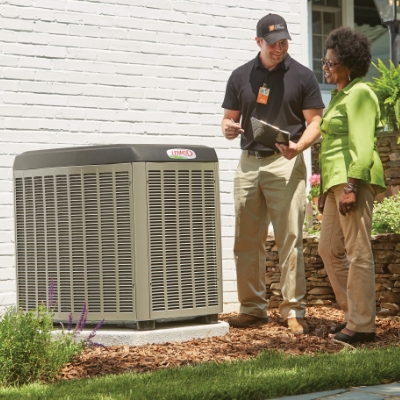How to Fix an AC Not Blowing Cold Air
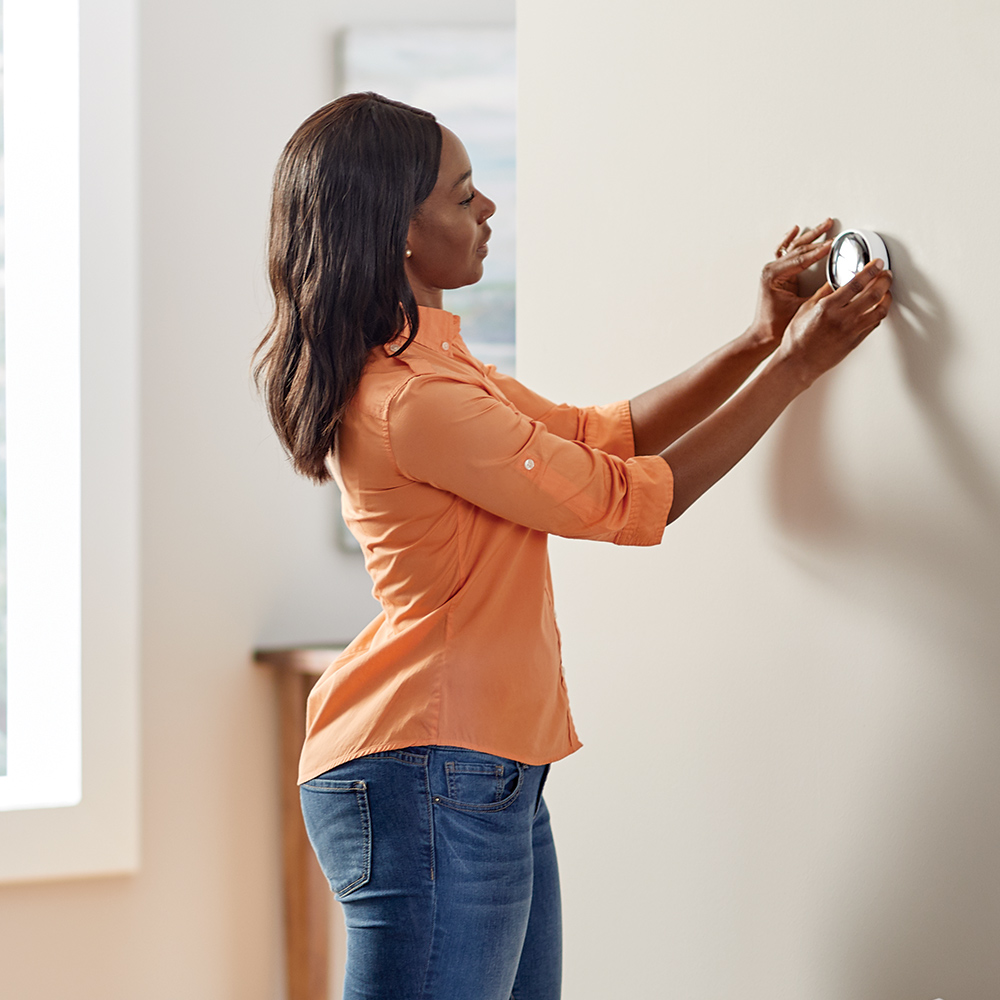
Last updated September 7, 2023
“My air conditioner fan is blowing but the air isn’t cold.” is a common complaint. Everything seems to be working but the system isn’t cooling or can’t keep up. You can often fix your airconditioner yourself. This guide will help you troubleshoot your system and decide if you can fix it yourself or call a professional HVAC technician.
“HVAC” stands for “heating, ventilation, and air conditioning” and is used when referring to the entire system. In many cases, the heating and air conditioning share many parts, such as the ducting and filters.
Difficulty:
Intermediate
Duration:
2-4 hours
Table of Contents
Power Problems
Change the Filter
Blocked Return
Open Interior Doors
Clogged or Damaged Ducts
Dirty Compressor Coils
Power Problems
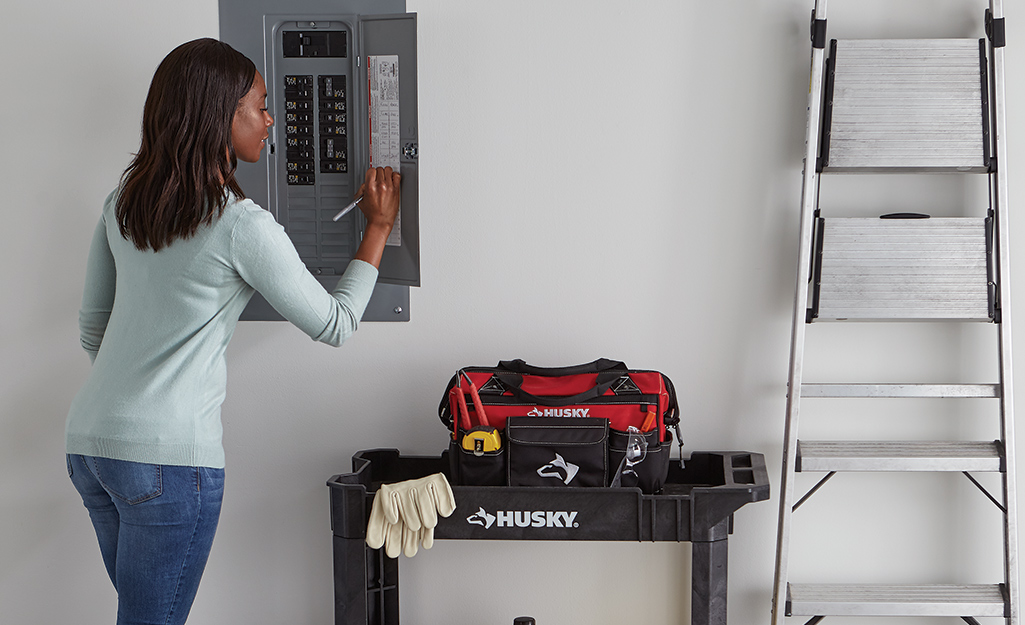
During a power outage, if the power has gone off and on several times, you may need to reset the breaker that controls your central air conditioning unit. Find the breaker, turn it off and leave it off for a minute. Turn it back on and check the operation.
In many cases, there is a power shut-off next to the outside unit. Check it as well.
Change the Filter

Some systems have multiple filters. They may be located in the return registers or in the indoor portion of your HVAC system. These filters should be replaced on a regular schedule. The frequency is determined by the unit and filters. It will be stated in the manufacturer's instructions, but it’s usually monthly. If a filter is dirty before its scheduled maintenance, go ahead and change it.
A dirty filter will restrict airflow through the system. It puts extra strain on the fan motor. A very dirty filter could impede air flow so much that the fan runs but no cool air comes out of the vents.
Maintaining the filters is the easiest thing you can do to improve the operation and lifespan of your air conditioning system.
Tip: Ensure that the HVAC fan isn’t running when the filter is replaced. Set the thermostat control to “off” and give the fan a minute to turn off and quit moving air.
Blocked Return

Your central air conditioning has vents all over the house that blow cold air. It also has vents, called “returns” that pull in air to circulate back to the air conditioning unit.
- If there is a filter located away from the central unit, it is in a return.
- Most return vents are centrally located in the house and are larger than the vents that deliver conditioned air.
- If a room has multiple vents, also known as registers, but one never blows air into the room, that one is probably a return.
- A return can be located in the floor, wall, or ceiling. Be sure that nothing is blocking a return or part of a return. They must remain wide open or the air conditioning system won’t work properly.
Open Interior Doors

If your AC is blowing cold air but some rooms are still hot, it could be a circulation problem.
- The system works on air circulation. When all of the interior doors are closed, the air can’t circulate properly.
- If a door is closed and there’s no space under the door because of carpet or another obstruction, the fan can’t push cool air into that room. Some warm air must leave in order for cool air to flow in. Open the door on a room that stays hot.
- If a room needs to be cool and the door needs to stay closed, consider changing to a louvered door, adding a pass-through vent in the door, or adding a return to that room.
- If opening the door doesn’t work, there could be a ducting problem.
Clogged or Damaged Ducts
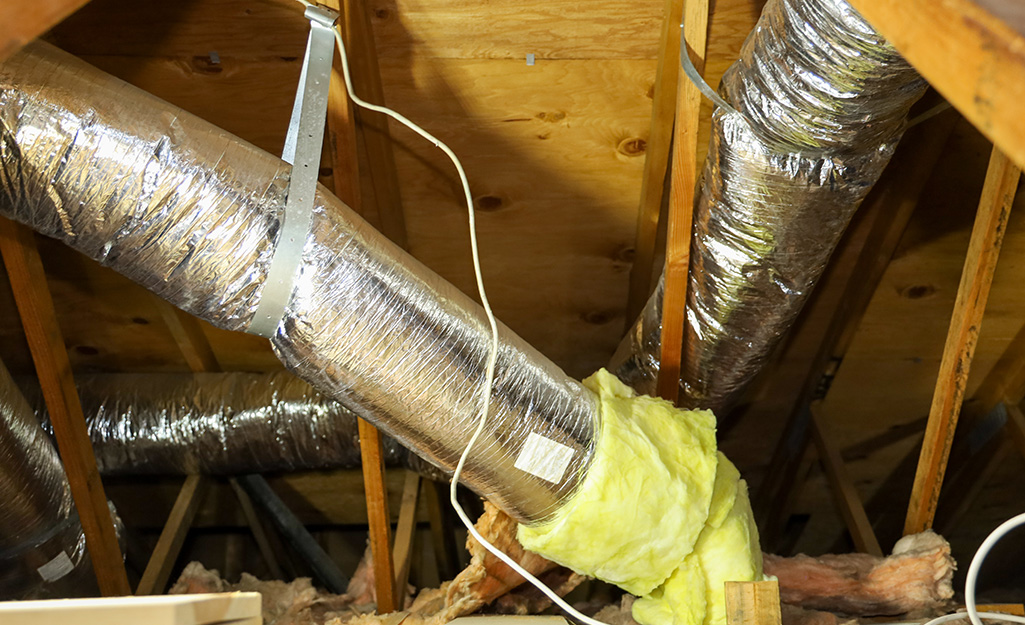
If the air is cool in some rooms but not others, check to see if the ductwork is damaged or clogged.
Damaged ducts could be spilling your cool air into the attic instead of into your living area
In some cases, the blower fan may be located far away from a room. By the time the air reaches distant rooms the air has warmed in a hot attic. In some cases, there isn’t enough air pressure in the ducts to move the cool air to the end of the line. Inline fans can be added in the ductwork or registers to help.
Dirty Compressor Coils
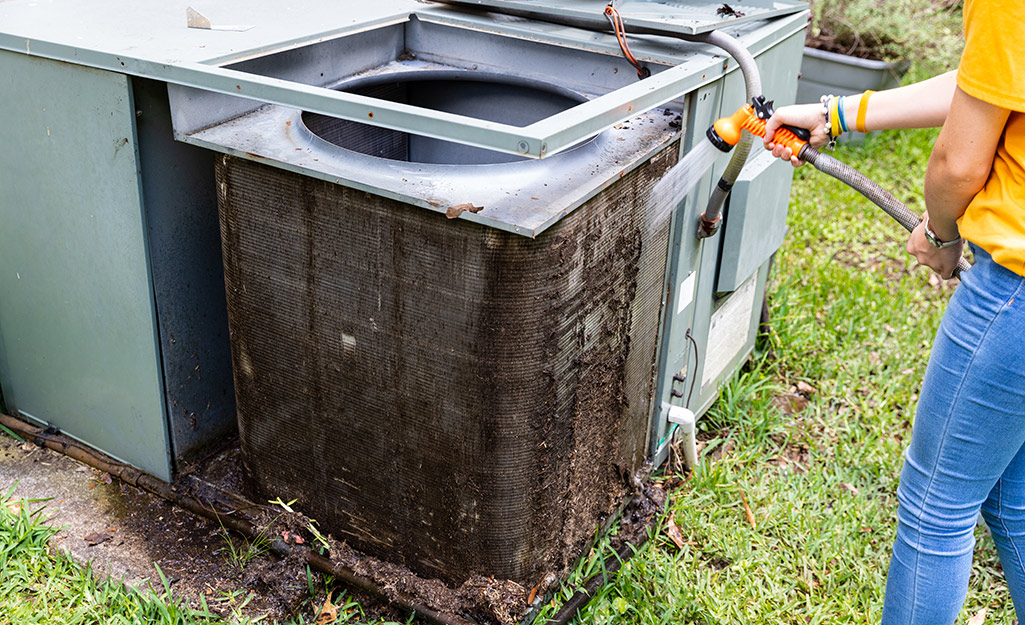
The compressor is part of the equipment that is outside of the house. It is surrounded by coils that the HVAC system uses to cool the air. If those coils are dirty, the unit may not work properly. They can become dirty from dust in the air, tree sap, sticks, leaves and animal activity, among other things.
- Start with a visual inspection. The coil fins can be sharp so don’t stick your finger in there. They’re also fragile so be careful with them.
- Wear gloves when working on the coils.
- If they appear to be dirty, turn off the power at the breaker panel or at the HVAC shutoff.
- Use a water hose with moderate pressure to rinse the coils.
- If more cleaning is needed, use a spray can of air conditioner coil cleaner and a brush that’s made for cleaning them. Follow the directions on the product.
- Once the cleaning process is finished, restore power and check for cold air.
Dirty Evaporator Coils

The evaporator coils are usually located inside the part of the system that is indoors. This is usually with the furnace in system with central heating.
- The evaporator coils are sometimes referred to as the “A” coils because they resemble a letter A.
- Whatever gets past the filter will end up clogging the evaporator coils.
- Turn off the power at the breaker box before opening any panels.
- Accessing this part is often difficult. It is behind a service panel that is held on with several screws. Many times it will be blocked by pipes or lines that must be handled carefully.
- The coils and fins are somewhat fragile, and care must be taken not to damage them. Fins are thin pieces of metal and the edges can cut your hands. Gloves are a must.
- Carefully use a vaccum cleaner hose to start. Try not to touch the coils with it, just remove surface debris.
- A special brush and spray cleaner are available for cleaning these coils.
- If it is very dirty and hard to access, a professional cleaning may be needed.
Broken Wires
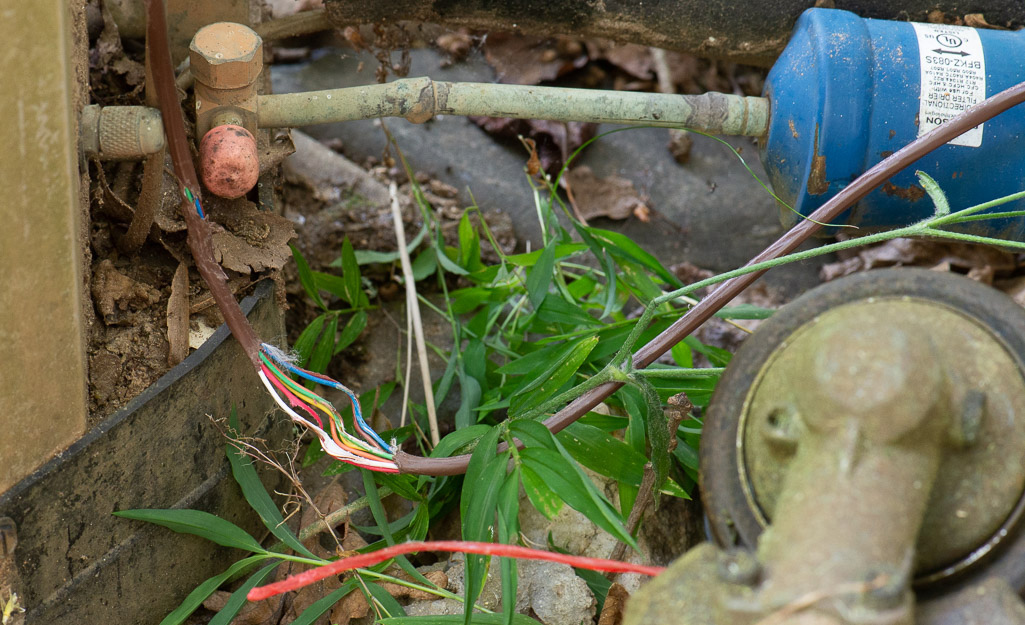
- Go to the outside unit.
- Visually inspect the wires between it and the house.
- Look for any broken wires or loose connections.
- If any are found, a qualified technician should be called to fix the problem.
- Power to the air conditioner should be turned off until the repair can be made. Even if the AC will run, it shouldn’t be used, since a short circuit in these wires can cause a malfunction that will damage the equipment.
Thermostat Malfunction
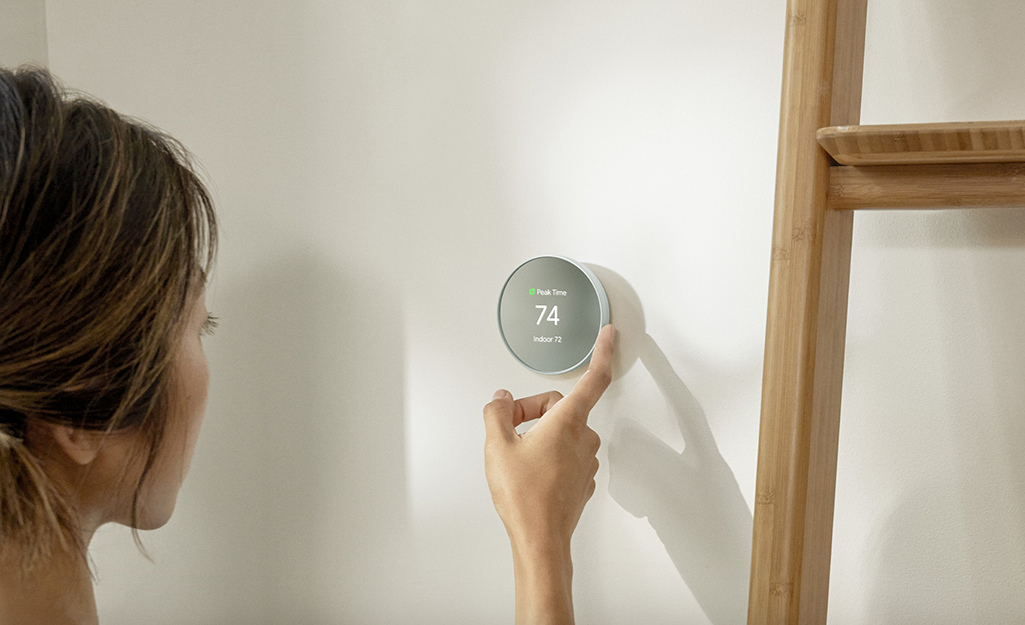
- The thermostat controls the system by turning it off and on to maintain the temperature you set.
- There are vents in the body of the thermostat that allow air to enter. If air can’t enter, it can’t sense the air temperature to turn on the unit.
- Check the owner’s manual to learn how to find the battery and change settings on your thermostat.
- Many electronic thermostats require a battery to operate. Test the battery to see if it is discharged.
- Some thermostats have an “offset” setting that changes when it turns on the AC in relation to the temperature.
- A programmable thermostat might need to be reset to factory settings and then reprogrammed with your desired settings.
- Electronic and mechanical thermostats can go bad. If you suspect that the thermostat is faulty, replacement may be a DIY project replacement may be a DIY project.
Refrigerant Leak
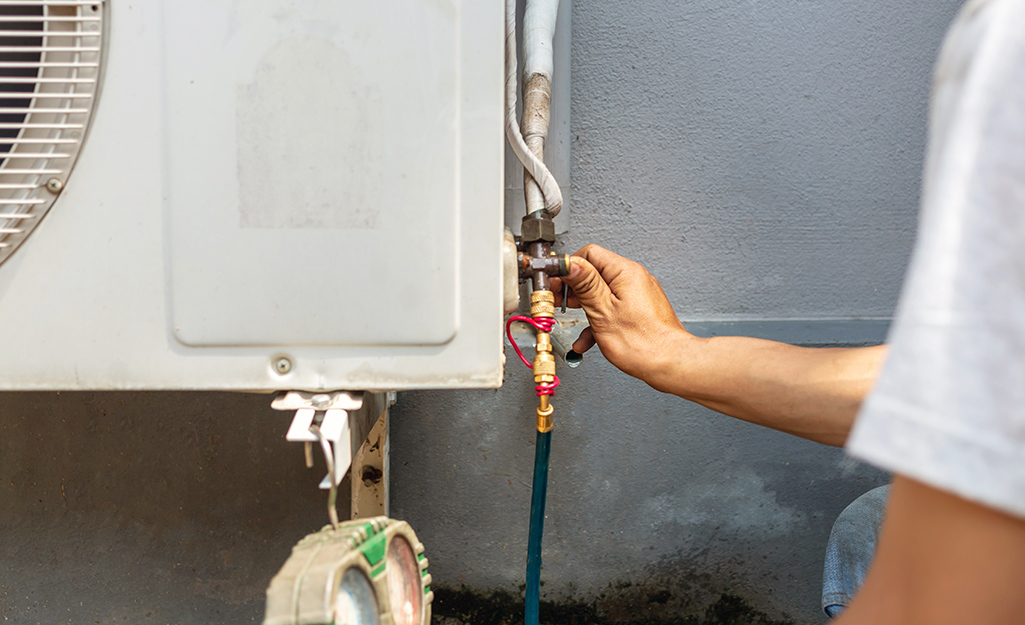
This is an issue that you can diagnose yourself but can only be fixed by a trained professional with the proper equipment.
Look for ice around in these areas:
- The lines that lead from the outside unit into the house.
- The condenser coils on the outside unit.
- The lines that come into the part of the unit that is inside the house.
- Remove the cover and look for ice on the coils that are inside the part of the system that is inside the house.
If parts of your system are icy, turn off the air conditioning but leave the fan on. This will allow the system to warm enough to melt the ice.
If you have fixed all the other issues mentioned in this guide and the system still freezes, a professional service call is necessary.
Faulty Capacitor
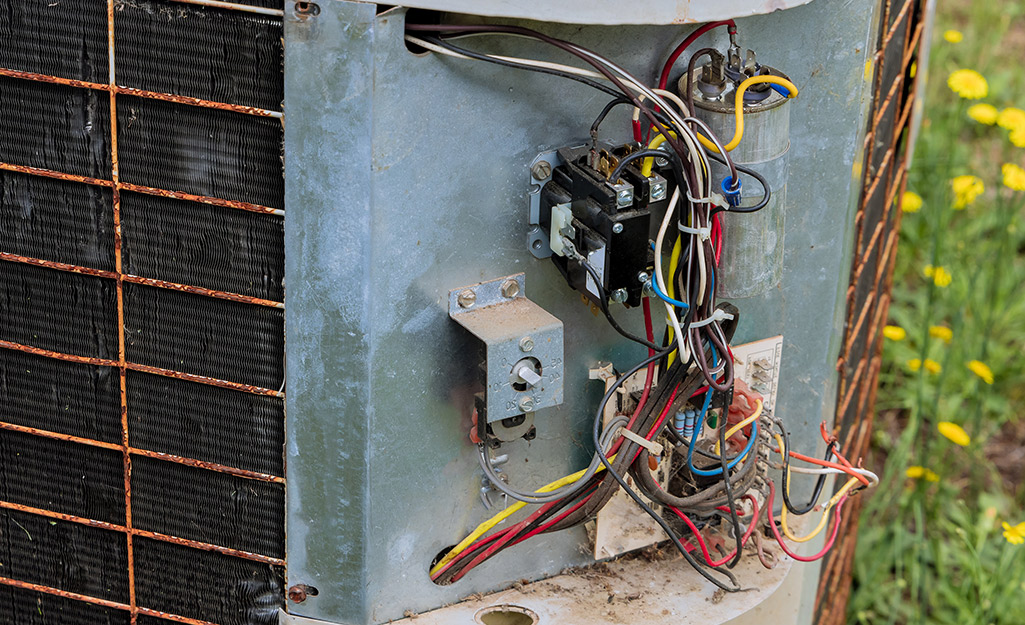
The compressor and fan motors require a surge of power to start and run. This is provided by a part called a capacitor. It is located under the service panel in the outside part of the HVAC unit.
Working with a capacitor can be dangerous. Capacitors store electricity and they will shock you on contact. Because of this, we will not recommend testing it with a multimeter unless you already know how to do it.
To visually check the capacitor:
- Begin by turning off the breaker to the air conditioner and disconnecting the power at the outside part of the unit. There are exposed connectors for 240 volt power under this panel.
- Sheet metal parts can have sharp edges so wear gloves and be careful handling the panel when it’s removed.
- The service panel will be held in place with screws. Use the appropriate driver, usually a 5/16 nut driver, to remove them.
- The capacitor is a metal cylinder, about the size of a soda can, with electrical connectors on top.
- Visually inspect the capacitor for any signs of leakage, rupture, or bulging. If any of these conditions exist, it’s bad and will need to be replaced. The absence of these doesn’t mean the capacitor is good, only electrical testing can say that for sure.
- Look to see if any wires appear to be broken or disconnected.
- Inspect the entire area for signs of excess heat, such as melted plastic or discolored metal.
Other Possibilities
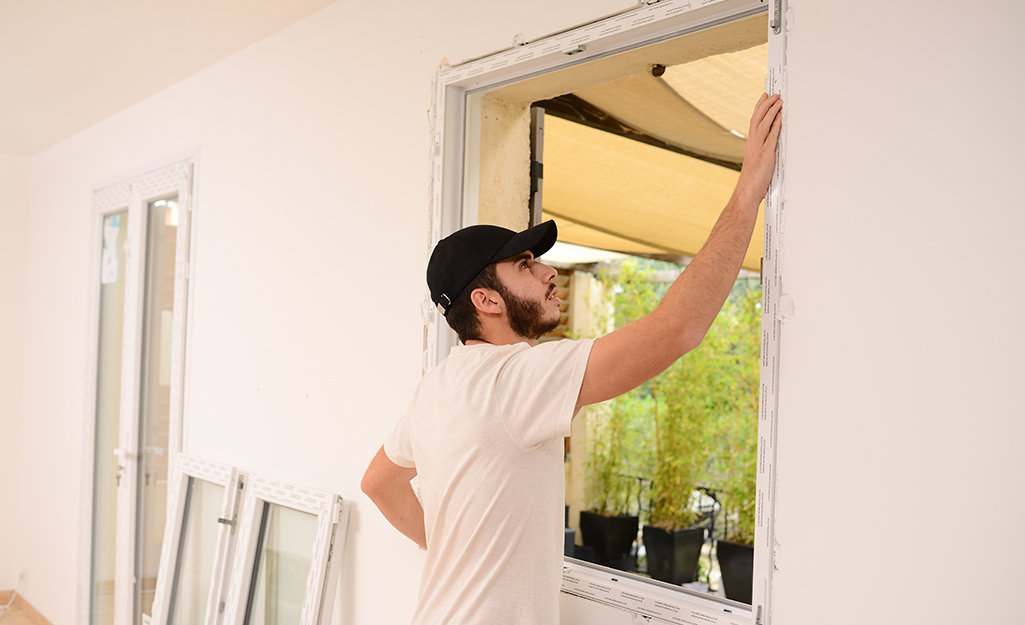
If your AC can’t keep your house cool, there may be issues that aren’t related to the HVAC system itself.
- Windows or exterior doors that aren’t weather sealed. Just like a draft in cold weather, a window or door that isn’t weather sealed can allow your cool air to escape while hot air enters.
- Windows or doors that aren’t energy efficient.
- Poor insulation in walls or the attic.
- Direct sun on the house. Any room that experiences direct Sun in the heat of the day will be harder to keep cool. Consider light colored curtains or shades.
- A reflective coating can be applied to the windows.
- Planting a shade tree can be helpful.
If your system runs constantly and can’t keep the house cool it may be a sign of an undersized system or it may be ready for replacement.
A new system is a major purchase but the cost can be offset by the cost savings of increased efficiency.
Many factors go into determining the correct size HVAC system for a house. We can help with that. Schedule an appointment with Home Depot Professional Services.
